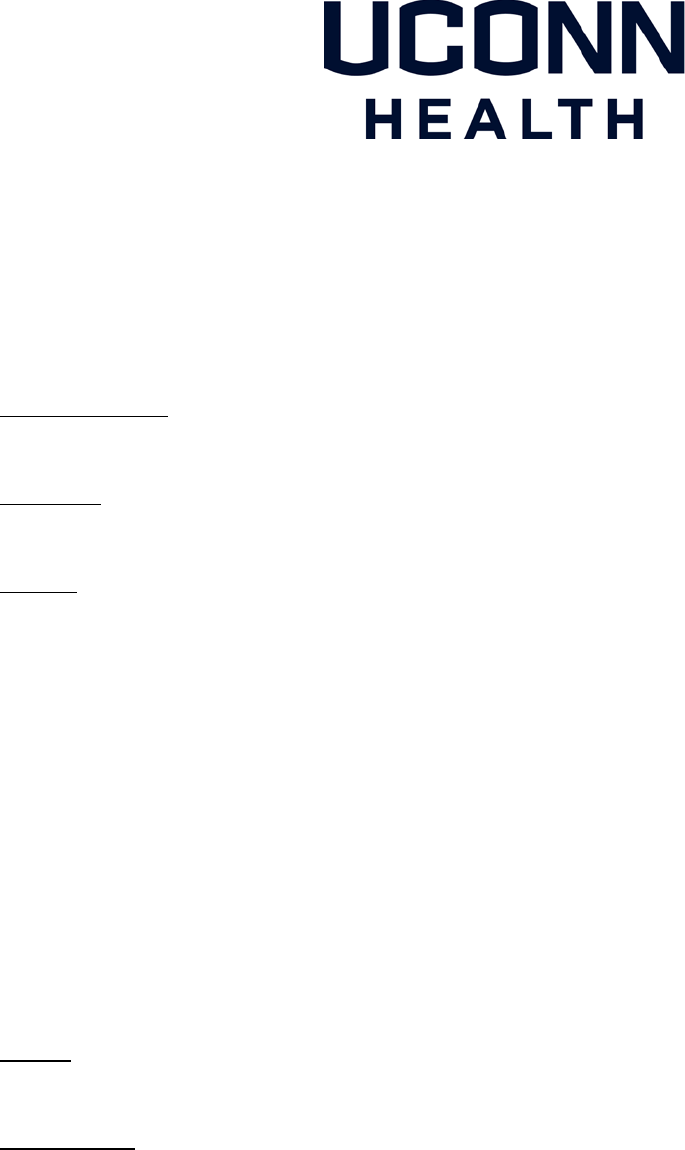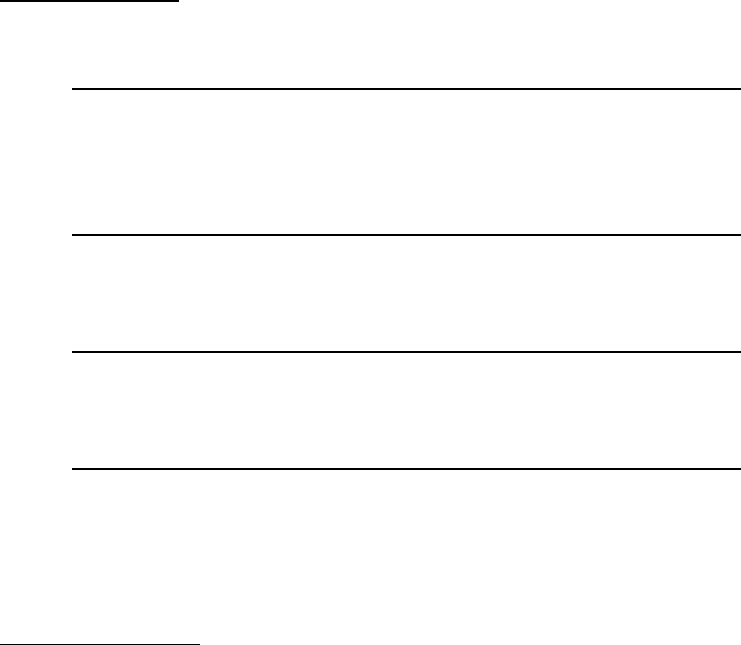
Page 1 of 4
CLINICAL POLICY
Critical Results Reporting
A. EFFECTIVE DATE:
July 19, 2022
B. PURPOSE:
To establish a process to assure direct, timely, and reliable communication of critical results.
C. POLICY:
Each clinical department that performs critical diagnostic tests, or reports critical results (i.e. laboratory,
diagnostic imaging, and cardiology) has developed a list of the critical tests and the test results considered
to be critical. (See Attachment A).
Other test results that are not on the list may be communicated as a critical result if the judgment of the
clinical department or nursing staff deems the result critical.
Once a critical result is identified, a licensed independent caregiver must be notified within 60 minutes, so
that treatment can be promptly initiated.
For critical results obtained at the bedside by a point of care non-waived instrument (example: i-STAT),
communication to the responsible practitioner must take place as soon as the result(s) is available. Critical
result reporting and documentation specific to this policy are the same for non-waived point of care
testing as any critical result obtained by the lab. For waived point of care testing (example: glucose meter)
critical result reporting and documentation outlined in this policy is exempt. Critical results for Urgent
Care (UC) patients that are resulted outside of UC hours of operation should be reported to one of the
Emergency Room practitioners.
D. SCOPE:
This policy applies to all UConn Health Clinical sites.
E. DEFINITIONS:
A critical test is defined as a test that always requires rapid communication of the result, even if it is
normal.
A critical result is defined as a value or interpretation of a test approved by the Medical staff that falls
significantly outside the normal range and may represent a life-threatening value, even if from a routine
test

Page 2 of 4
F. MATERIAL(S) NEEDED:
None
G. PROCEDURE:
I) Procedure for Reporting of Critical Results by Diagnostic Department:
Each department that reports critical results follows a specific reporting process as follows. Staff calling the critical
result must:
1)
State that the result is a critical result
2)
Ask to speak to the patient's own nurse, if possible
3)
Give the critical result only to a nurse or responsible licensed caregiver
4)
In all instances, request a ‘read back’ verification from the person receiving the test result. Results may not
be communicated to an answering service.
II) Communication and Documentation of Critical Test Results
1)
Every attempt is made to speak to the patient’s direct caregiver. If that caregiver is not available the result
may be given to another responsible licensed caregiver.
2)
The person receiving a telephone report of a critical result or a critical result obtained from a non-waived (i-
STAT) point of care testing, should follow the following steps:
a)
Document the result on the preprinted ‘Critical Result Notification Form’ or electronic documentation
tool, then read the result back to the reporting party after it is documented.
b)
If there is an existing physician order for a protocol (ex. Insulin, heparin) that provides direction
for nursing intervention in response to a critical result, or if treatment has already been
initiated by the practitioner, the action taken and/or information is documented in the patient’s
medical record.
c)
If the critical result is reported as part of a series of critical results (e.g. cardiac enzymes in a
series) but are moving back toward the reference range, the results do not need to be reported
to a practitioner if treatment has been preemptively directed by the practitioner. The action
taken and/or information is documented in the patient’s medical record.
d)
For all other critical results, a phone call or secure text is immediately placed to a responsible
licensed caregiver for notification. A nurse must communicate the result directly to the
licensed caregiver. If the result is sent to the practitioner by text, the practitioner must
deliberately respond to the text, an automatic “read” receipt is not an acceptable response. A
text may only be used as the first attempt to contact the practitioner.
i)
For licensed independent practitioners who are available through an answering service:
(1)
A critical result may not be left with an answering service. A message is left for the attending
physician or covering physician/licensed independent caregiver to call the unit as soon as
possible ‘for a critical result.’
(2)
If a practitioner does not respond after 15 minutes, a second call is placed and a second
message is left with the answering service requesting an immediate call back.
(3)
If a practitioner does not call back and 30 minutes has gone by since the initial call, the
“Physician Notification of Patient Change in Condition’ policy is enacted.
e)
When a licensed independent caregiver has been notified of the critical result:
i)
Document the time and the name of the caregiver to whom it was reported on the Critical Result
Notification Form or electronic documentation tool.

Page 3 of 4
III) Measuring and Assessing the Timeliness of Obtaining and Communicating Results of Critical Tests and Critical
Results:
1)
The Laboratory, Cardiology, Radiology, and Respiratory Departments shall measure and document the
timeliness of performing critical tests and reporting critical results.
The following components shall be recorded:
a)
The date and time the diagnostic department received the request or specimen for the test.
b)
The date and time the diagnostic department made available the critical result or the result of a critical
test.
c)
The date and time the result is communicated to the receiving unit (if applicable).
d)
The date and time the result is communicated to the licensed caregiver or his/her designee.
2)
The receiving Patient Care Unit shall record:
a)
The date and time the result is communicated to the receiving unit.
b)
The date and time the result is communicated to the licensed independent practitioner and the name of
the practitioner the result was communicated to.
3)
Departments and Patient Care Units will oversee the completion of monthly audits for their area. Reports of
compliance, any identified deficiencies or performance improvement efforts will be reported at a unit level
and through the hospital performance improvement reporting structure.
4)
The following calculations will be ascertained:
Critical test:
a)
The elapsed time between the date and time a critical test is ordered and the date and time the results of
the critical test is communicated to the physician/licensed independent caregiver.
Critical result:
a)
The elapsed time between the availability of the critical result and receipt of the result by the receiving
unit.
b)
The elapsed time between communication of the critical result to a responsible licensed independent
caregiver or his/her designee.
H. ATTACHMENTS:
None
I. REFERENCES:
Physician Notification of Change in Patient Condition, Nursing Practice Manual
J. SEARCH WORDS:
None
K. ENFORCEMENT:
Violations of this policy or associated procedures may result in appropriate disciplinary measures in
accordance with University By-Laws, General Rules of Conduct for All University Employees, applicable
collective bargaining agreements, the University of Connecticut Student Code, other applicable University
Policies, or as outlined in any procedures document related to this policy.
L. STAKEHOLDER APPROVALS:
On file
M. COMMITTEE APPROVALS:
Medical Board

Page 4 of 4
N. FINAL APPROVAL:
1. Bruce Liang, MD (Signed) 1/13/2023
Bruce Liang, MD Date
Interim Chief Executive Officer & EVP for Health Affairs
Dean, School of Medicine
2. Anne Horbatuck (Signed) 1/6/2023
Anne D. Horbatuck, RN, BSN, MBA Date
Clinical Policy Committee Co-Chair
3. Scott Allen, MD (Signed) 1/6/2023
Scott Allen, MD Date
Clinical Policy Committee Co-Chair
4. Caryl Ryan (Signed) 1/9/2023
Caryl Ryan, MS, BSN, RN Date
Chief Operating Officer, JDH
VP Quality and Patient Services & Chief Nursing Officer
O. REVISION HISTORY :
Date Issued: 6/09
Date Revised: 2/11, 9/12, 11/12, 5/13, 11/14, 4/15, 5/17, 3/18, 5/19, 7/22
Date Reviewed:
